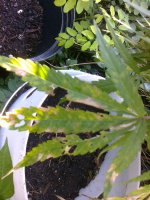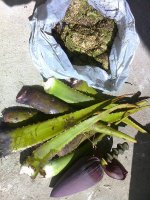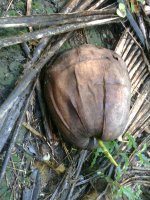B
BlueJayWay
unthing
Thank you for jogging my memory! - it was the Micro version of Dutch White Clover that I was thinking of and what you found about it being part of a grass mix is exactly what happened. This seed was pulled from the retail stores and distribution is limited to grass seed mixes.
Tons and tons are shipped to Oregon to be packed with the grass seeds grown in the Willamette Valley. The Micro Clover will sprout and grow first with the 'real grass seed' following up thereby improving the soil and providing early roots to prevent run-off.
Next time you're at a nursery or hardware store look at the label on grass seeds for the homeowner - Stayton, Oregon
CC
Micro clover - http://www.whygoodnature.com/node/226 - too bad it seems to be coated with a nitrogen fert.





